Setting up some ground pole exercises in your arena or schooling field is a great way to make flatwork more interesting to the older horse, and it’s a stress-free method of introducing a green bean to jumping. Walking, trotting and cantering over ground poles teaches a horse to balance himself, pick up his feet and figure things out for himself. Pole work also increases a horse’s muscle tone and flexibility, and helps him learn how to adjust his stride—something he’ll need to know before he heads toward a double- or triple-fence combination in a jumping course.
If you’re like many riders, you probably don’t have a jump crew on the ground every time you school. Since it’s not particularly safe to jump by yourself, working over poles is a great way to keep your horse tuned up without actually jumping any fences.
Pole work also helps to sharpen your riding skills because it teaches you how to maintain a steady rhythm in the trot and canter. If your horse is poking along like a snail or galloping around the arena at warp speed, he’s going to step on some poles or fall on his face, and it won’t be pretty.
The poles you use should be solid and heavy so they don’t roll or split if your horse kicks or steps on them. Avoid using plastic plumbing pipes as poles because they may shatter if your horse steps on them. You can make your own poles out of inexpensive 8-foot wooden landscaping poles purchased at a home improvement store. To set up several exercises in the arena at once, you’ll need around 14 or 15 poles. It will be easier for your horse to see them on the ground if you paint them white and some other dark color, like red or black.
Here are a few easy-to-set-up ground pole exercises you can do with your horse.
Place several single poles randomly around the arena and incorporate them into your flatwork sessions. Start by walking over the poles. If your horse is young or green and hasn’t seen a “scary” pole before, be prepared for him to jump 10 feet over it. Take a deep breath, relax, soften your hands and continue walking over the same pole until your horse gets bored and steps over it properly instead of leaping into the air. Once your horse has mastered the first pole, move on to the other ones scattered around the arena. Once he walks calmly over all of the poles, you can move up a gear and pop over them at the trot and canter.
Single Poles
Don’t get into jumping position as you approach a pole; if you’re trotting, continue posting, and if you’re cantering, keep your seat lightly in the saddle. Always aim for the middle of the pole. Don’t let your horse wiggle around in front of it or run out. Get him back on track by using leg-yielding aids. Try not to look down at the poles because doing this affects your balance in the saddle; keep your head up and look over the poles into the distance.
Work the poles into circles, serpentines and figure-eights. Try to keep your horse’s pace and rhythm the same as he approaches and travels over them. Keep your reins even, your contact steady and your legs touching his sides, ready to urge him forward if needed. Don’t fuss with your hands to try to help him get the right stride over the pole. Your main job is to ask your horse to quickly respond to your leg cues so he moves forward freely and with energy. If your horse is really lazy, you may need to carry a crop and use it once or twice behind your lower leg if he ignores your aids. Remember to always approach poles from both directions so your horse doesn’t become one-sided and bored.
Set up a line of five or six poles, placing them parallel to one another. If you’re riding a horse, set the poles up about 4 1/2 to 5 feet apart. For a pony, set the poles about 3 1/2 to 4 feet apart.
Trotting Poles
Walk through the poles once or twice and then try them at the trot. Ask your horse to trot around the arena at a steady, active pace before you approach the line of poles. He should have a spring in his step. Keep your upper body tall and centered on your horse’s back, and concentrate on keeping your arms and wrists supple so you can follow his head movement. You don’t want to have a death grip on his mouth as you head toward the trotting poles, as this will affect his approach. Allow your horse to stretch his neck and head down if he wants to on his first approach or two as he figures out the exercise.
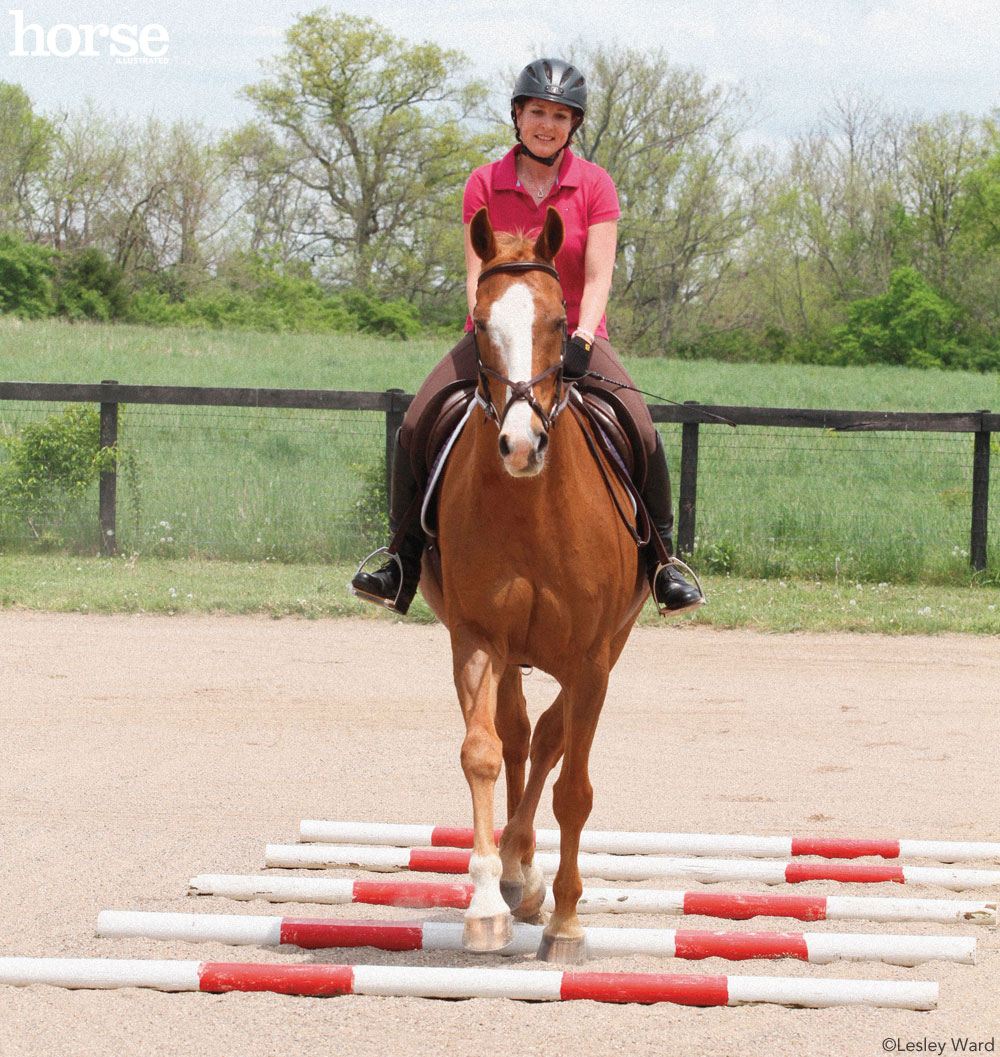
Give your horse plenty of room to approach the poles. Don’t yank him toward the poles at the last second. Steer him to the middle of the poles and keep your hands quiet; you shouldn’t be using them to help you keep your balance. You can post the trot over the poles or lift your seat slightly out of the saddle and get into a half-seat to get off your horse’s back and allow him to work his back muscles.
Do your best to maintain the same pace and rhythm over all of the poles—a lazy horse may need a tap of the whip behind your leg while you’re trotting the line. When you trot over the last pole, ask your horse to continue with energy around the arena. If he’s particularly pokey, he may slow down the second he clears that last pole. Keep him moving forward!
After one or two trips through the line, your horse should figure out where to put his feet if the poles are properly spaced. If he keeps tripping or is still having trouble after several tries, hop off and adjust the distances between the poles to be shorter or longer depending on his stride; the distance should match his stride length. Trotting poles should be a confidence-builder for your horse, not a negative experience.
Place four poles on a 20-meter circle at 3, 6, 9 and 12 o’clock. Walk over the poles first and think about bending your horse slightly to the inside using the standard aids: inside leg at the girth, outside leg slightly behind the girth, your inside hand slightly away from your horse’s neck and your outside hand just brushing his neck. Maintain a light contact on the reins and ask him with a light squeeze of your legs to stay forward and engaged with his hind legs.
Poles on a Circle
Once you’ve walked over one pole, look to the next one. Ask your horse for inside bend all the way around the circle. Walk the circle in both directions. Most horses, especially off-the-track Thoroughbreds, are stiff on one side and need to be worked constantly in both directions to become more supple. Once your horse has mastered the circle at the walk, try it at the trot. Ask for a nice, rhythmic trot and keep your contact steady. Don’t let your horse drift outside the poles to avoid trotting over them. Maintain the inside bend by squeezing the inside rein, and keep your horse on the circle with your outside leg.
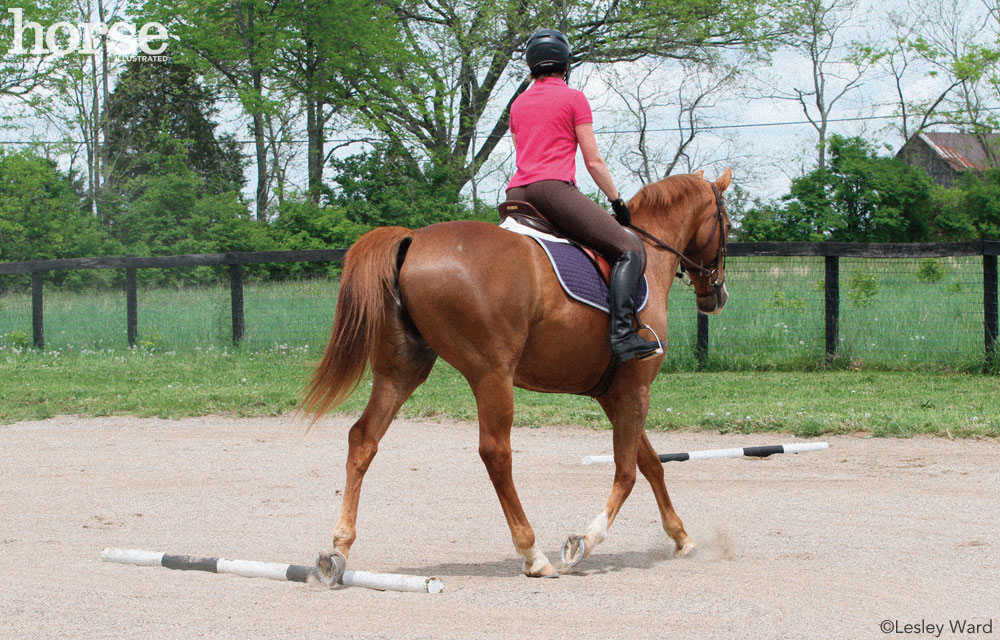
Once you’ve mastered the circle in both directions at the trot, try it at a canter. At first, canter over two poles and then go around the remaining two. Once your horse canters nicely over two poles, add the other two. Your first few tries may be a bit awkward—those poles come up quickly at the canter! Your horse may trip or try to jump the poles, but if you ask him for a nice, collected canter, he should be able to canter over the poles in stride. Depending on the size of your horse, you should get three forward canter strides or four regular strides between the poles, but you may find your horse taking more or fewer strides as he tries to work out where his legs go. It’s important to stay as quiet as possible on his back and to not yank him in the mouth as you canter over the poles.
Although it may seem difficult at first, try to do at least two fairly balanced circles before you slow down and change directions. The better your horse gets at this exercise, the more in control and balanced he’ll be when you’re cantering around a jumping course.
If you’ve got six poles, you can set up two canter-pole exercises. Set up three poles 18 to 24 feet apart for a one-stride exercise, depending on your horse’s stride; it may help to start with the poles set at 20 feet and space them tighter or wider if needed. Next, set up three poles 9 to 10 feet apart for a bounce exercise. The one-stride exercise will be easier for your horse, so try that first. It’s essential that you pick up a collected canter before you head toward the poles to help your horse get over the first pole in stride. If he takes off too far in front of the pole or too close to it, he’ll struggle to pop over the rest of them smoothly. If your approach is steady and collected, your horse should be able to take off at the right distance, land, take one stride, and then canter over the next pole.
Canter Poles
If your horse handles the one-stride layout successfully, try the 10-foot bounce exercise, where your horse jumps the first pole and takes off again with no stride between the poles. Be prepared—the first time you try a bounce, your horse may try to leap two poles at once, so stay secure in the saddle and be giving with your hands if he jumps big.
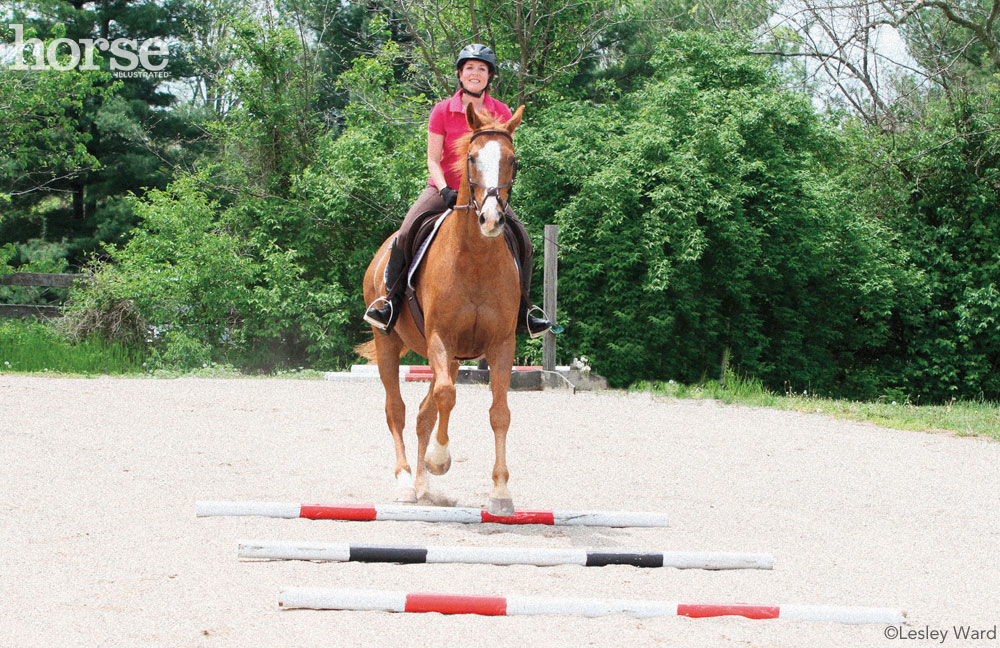
Give a small half-halt with your outside rein to balance your horse a few strides out from the first pole, then soften with your hands so you don’t yank him in the mouth if he stumbles or jumps awkwardly. As with all of these exercises, remember to do them in both directions.
Incorporating pole work into your everyday schooling sessions is an easy way to improve your horse’s balance. When you get the chance to raise the poles and actually jump them, you should see an improvement in your horse’s jumping style.
Here are more resources on improving your training routine:
4 Fences 7 Ways
Help Your Horse Jump Better with Trot Poles
Special thanks to Bridget Bellocq and Never Ben Kissed for assistance with these photos and video.
This article originally appeared in the August 2013 issue of Horse Illustrated. Click here to subscribe.

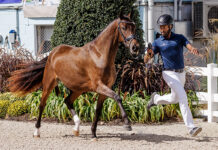



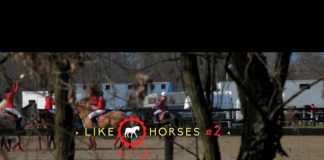

Cool article and good ideas on the different ways to use poles. Thanks!!
Great exercises will use.
Thank you… the video really helped explain the written… clear and User Friendly! 🙂
Interestng! I hope that everyone had a great and safe weekend,enjoyed the recent holiday that we’ve had,having a good week and has another good weekend. I also hope that they have a happy Parent’s Day! That goes for last year and all the other years that I’ve missed.
Great advice.
[…] the online discussions about poles and groundwork, a lot of the barns use landscaping timbers so they won’t roll. (See also: […]